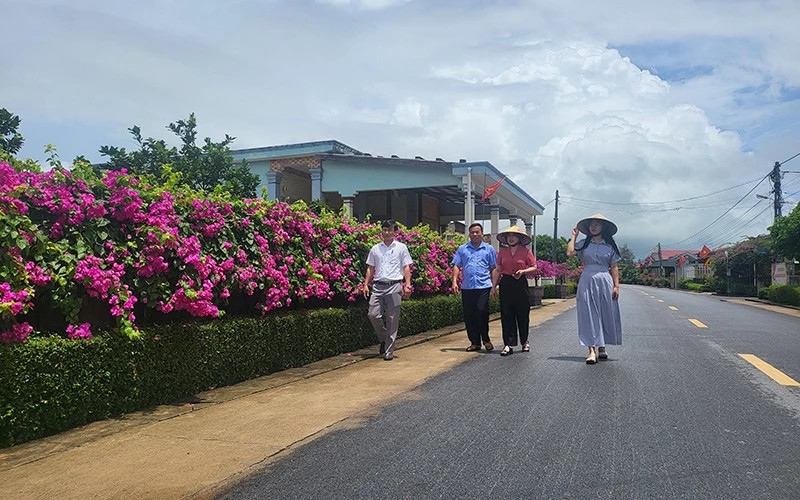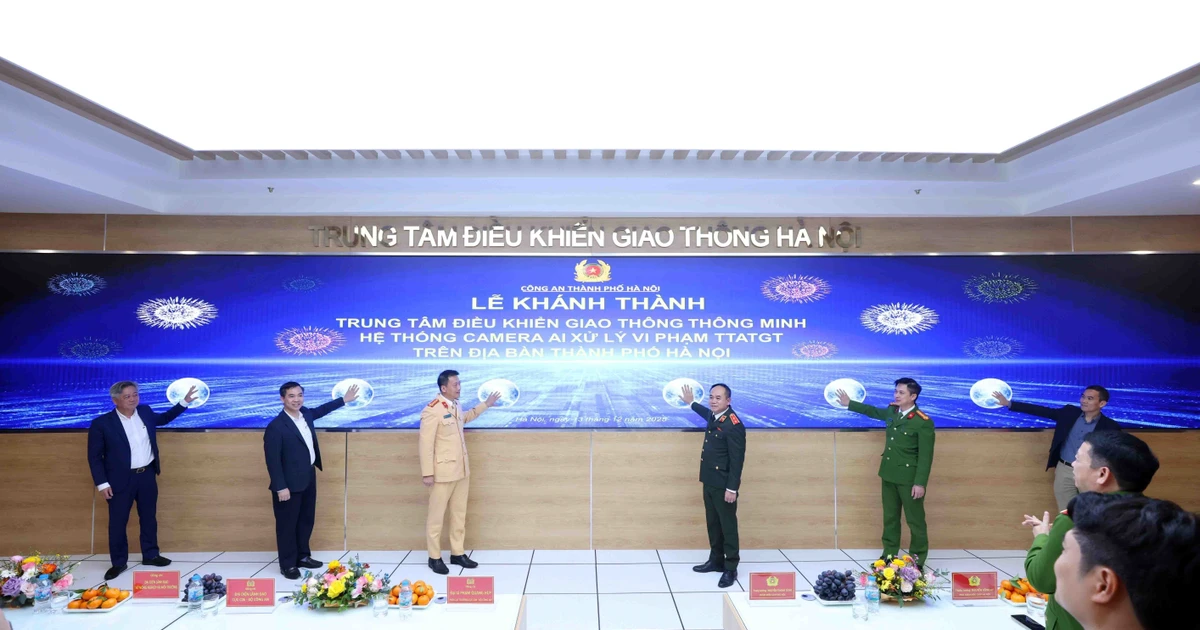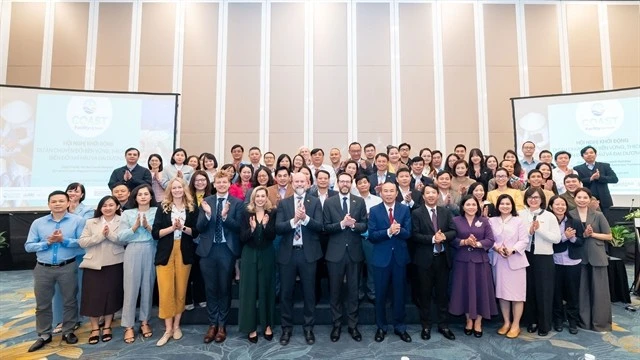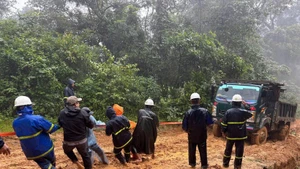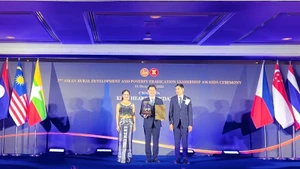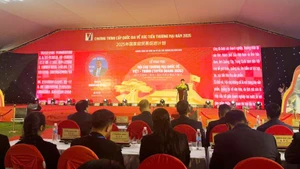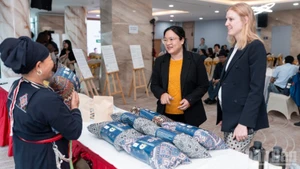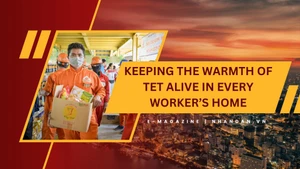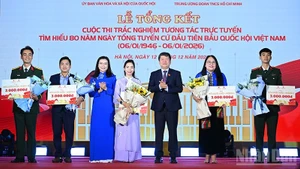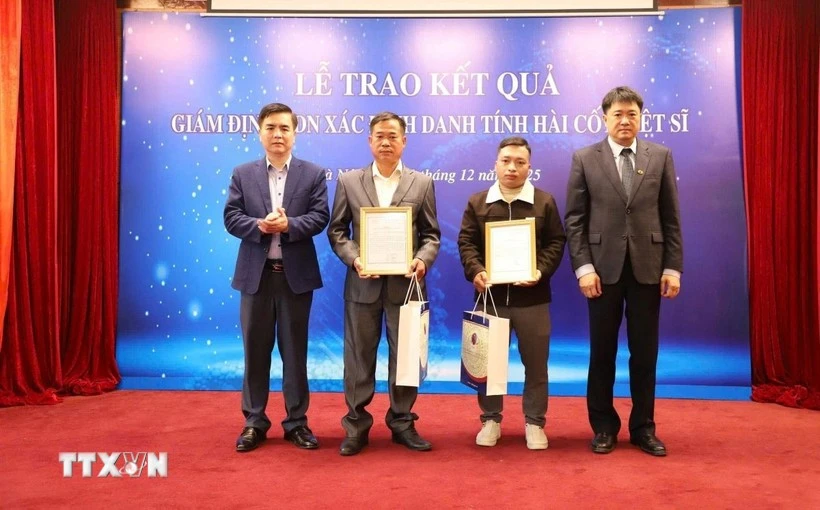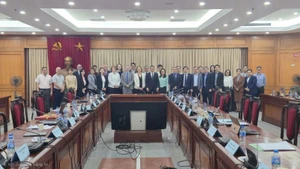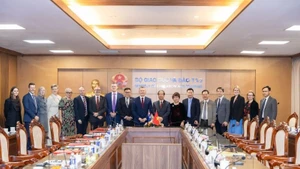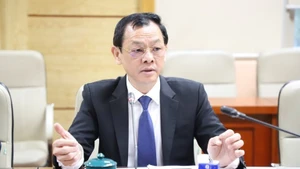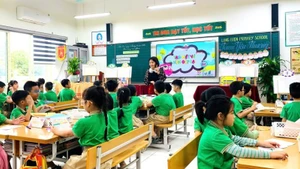After more than 14 years of building new-style rural areas, the whole province has 170 out of 170 communes meeting new-style rural standards, and 9 out of 12 district-level units are recognised as meeting new-style rural standards or completing the task of building new-style rural areas.
New vitality in difficult areas
Looking back at the journey of more than 14 years of implementing the National Target Programme on building new-style rural areas, no matter how optimistic, many people are still amazed when the mountainous, border district of Huong Khe (Ha Tinh) has 100% of its communes recognised as meeting new-style rural standards.
Phan Ky, Vice Chairman of the People's Committee of Huong Khe District, said that aiming to improve and enhance the material and spiritual life of the people, the local Party Committee and authorities determined that building a new-style rural area is both the destination and the solution to realise the set goals.
In reality, the persistent will and aspiration to rise up of the people in Huong Khe are materialised through intensive forests, fruit-laden orange hills, organic, closed livestock farms, typically more than 3,000 hectares of land growing Phuc Trach grapefruit and Atractylodes macrocephala, generating hundreds of billions of VND per year. This is a great motivation for people in mountainous districts to turn mixed gardens and bare hills into hundreds of model new rural residential areas, such as Nam Tra (Huong Tra Commune), Phu Le (Huong Trach Commune), Phu Thanh (Phu Gia Commune) and Yen Binh (Loc Yen Commune).
Deputy Chief of the Office of New Rural Areas in Huong Khe District, Nguyen Tri Dong, said that currently, the traffic infrastructure in the area has been built synchronously, with high connectivity with 14 out of 14 standard roads, 79 out of 79 inter-commune roads, commune axes and nearly 95% (1,167.2/1,223.1 km) of village roads, main intra-field axes invested in construction to meet standards.
In recent years, the locality has upgraded, repaired and built 518 new classrooms, administrative buildings, other works to ensure the facilities of 47out of 59 schools recognised to meet national standards; invested in upgrading and ensuring the safety of 23 dams, embankments to prevent riverbank erosion, solidified 58.72 km of intra-field canals; built new and repaired to meet standards 20 out of 20 commune cultural houses, 181 village cultural houses, 110 village sports areas.
After completing the procedures for submitting to the steering committees at all levels to recognise Huong Khe as meeting the standards of a new-style rural district, the locality will continue to research and synchronously deploy solutions to bring the new rural construction programme into greater depth and sustainability.
Journey without end
Assessing the efforts and results of the implementation of the National Target Programme on Building New-style Rural, Tran The Dung, Standing Deputy Secretary of the Ha Tinh Provincial Party Committee, said that despite many difficulties, with the focused leadership and drastic direction of the entire political system and the active participation of the people, the province has achieved quite comprehensive results, which have been highly appreciated by the Central Government and selected to pilot the province to meet the standards of a new-style rural district from 2021-2025.
After the Project was approved by the Prime Minister, Ha Tinh included it in the target of the Resolution of the 19th Provincial Party Congress to focus on leading and directing the implementation of the project.
The rural economy is increasingly developing, agriculture is developing towards commodity production, safety, organic, circular, and ecological, associated with land concentration and accumulation; rural industry and services are developing quite well, and the service and trade system in rural areas is developing synchronously, contributing to job creation, increasing income and promoting economic restructuring and rural labour structure.
Through the process of building new-style rural areas, infrastructure continues to be upgraded, creating regional linkages and driving forces for socio-economic development in many localities. Culture, society and environment in rural areas have changed positively. The landscape environment has been improved, especially the collection and treatment of waste in households.
Security and order in rural areas are ensured, and models of self-governing mass organisations on security and order at the grassroots level continue to be replicated. The movement of building new-style rural areas has been maintained, contributing to creating a green, clean and beautiful landscape. To date, 1,205 out of 1,512 villages have met the standards for new-style rural areas (79.9%).
In addition to the achieved results, the process of implementing the task of building new-style rural areas, especially the project of the province meeting new-style rural standards, has encountered many difficulties and challenges because the set of new rural criteria for the period 2021-2025 has many indicators and criteria with higher requirements than the previous period.
Resources to implement the province’s project meeting new rural standards have not been fully and promptly allocated.
To complete the province’s goal of meeting new rural standards in 2025, the locality will research and implement many creative ways to mobilise resources, especially socialised resources.
